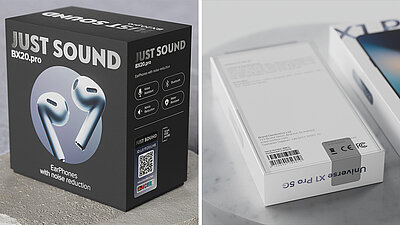The Problem of Counterfeiting in the Toy Industry: What brands can do about It
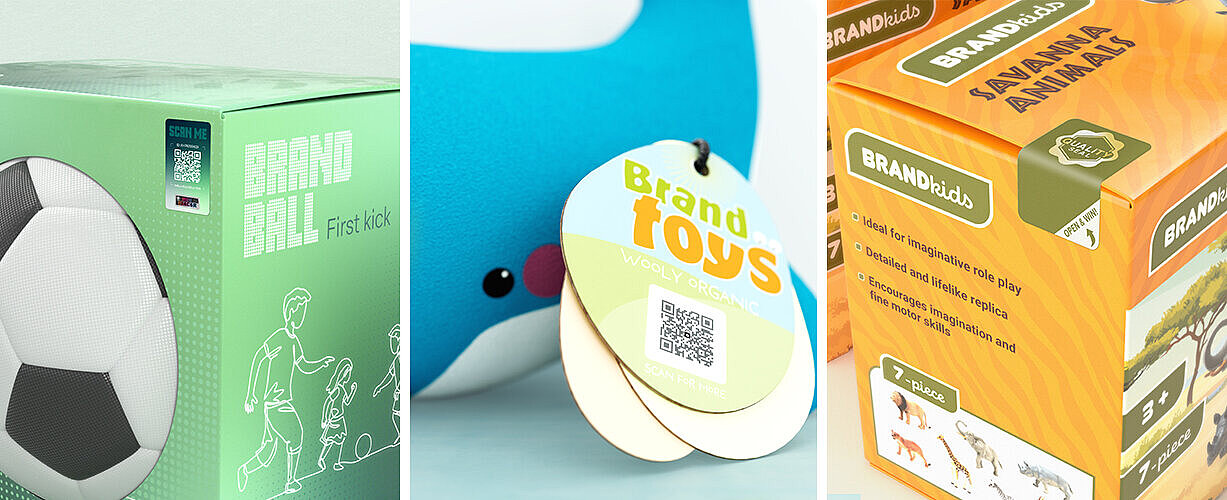
The rise of counterfeit toys has significant consequences not just for manufacturers, but also for consumers—particularly children. Counterfeit toys, which are often made from substandard materials, pose serious safety risks. Counterfeit toys infringe on intellectual property rights, abuse consumer trust and cause considerable financial damage to legitimate businesses. Addressing counterfeiting in the toy industry is critical for protecting brand integrity, ensuring consumer safety and maintaining the overall health of the industry.
In this article, we'll explore the current state of the toy market, the challenges posed by counterfeit toys and how brands can effectively combat this growing threat.
The Toy & Games Market: A booming Industry
The global toy and games market is thriving, with an estimated worth of $324.66 billion in 2023. This market is projected to grow at a compound annual growth rate (CAGR) of 4.3%, reaching $439.91 billion by 2030. The toy and games industry is diverse, encompassing a wide range of categories, including "Outdoor & Sport Toys," "Puzzles and Games," "Infant Toys," "Dolls," "Preschool Toys," and "Electronic Games".
The electronic games segment held the largest revenue share of over 52% in 2023. Consumer spending on video content, Virtual Reality (VR) items, and video game tournaments has increased significantly, driven by technological advancements. With the proliferation of mobile and online gaming, as well as the shift from physical to digital software distribution, the electronic games market is experiencing exponential growth. Many toymakers are heavily investing in content production centered around their flagship products, using this content as lead generators. They are also creating interactive play experiences to add value to their physical products. This shift reflects a broader trend from products to a more service-oriented model, transforming many industries, including toys and games.
The games and puzzles segment is projected to grow at a CAGR of 7.5% from 2024 to 2030. Board games have seen a resurgence, with a 48% increase in sales reported in 2021. Classic games like chess, Chutes and Ladders, and newer hits like Exploding Kittens have driven this growth. Moreover, the launch of innovative and unique puzzles is playing a crucial role in the segment’s continued expansion. This revival of traditional games has been fueled by families spending more time at home, seeking engaging and interactive forms of entertainment.
Several other key trends are driving the growth of the toy and games market. The increasing popularity of pop culture has created high demand for limited-edition character merchandise. The emphasis on STEM (Science, Technology, Engineering, and Math) toys is also gaining traction, with parents looking for toys that encourage 'Learning through Play' to make education more enjoyable for children. Outdoor and sports toys continue to hold a significant market share. Examples of outdoor toys include slides, trampolines, and games like Spikeball, all of which promote active play and social interaction in open spaces. Character-based toys, including action figures and dolls, have also maintained their popularity.
However, the industry's growth is not without challenges. Environmental concerns, particularly around plastic waste, have pushed many companies toward more sustainable practices. Toy manufacturers are increasingly under pressure to reduce their environmental impact by exploring eco-friendly materials and recycling initiatives. Another challenge lies in the industry's reliance on foreign countries for raw materials, making it vulnerable to geopolitical tensions and disruptions in the global supply chain.
Key Players
The toys and games industry is dominated by several key players that collectively hold the largest market share and shape industry trends. Leading companies include:
- Spin Master
- The LEGO Group
- SANRIO CO., LTD.
- Playmates Toys Limited
- JAKKS Pacific, Inc.
- Mattel
- Hasbro
- Schylling
- Bandai Namco Holdings Inc.
- Dream International Limited
These companies continue to innovate and adapt to changing consumer demands, ensuring they remain at the forefront of this booming market. Especially Mattel Inc. remains a dominant force, especially in the dolls category, with its Barbie brand maintaining iconic status worldwide. Furthermore, LEGO, a leader in the construction toy segment, continues to play a significant role in shaping the industry, thanks to its innovative products and successful brand collaborations.
The growing Issue of counterfeit toys
Counterfeit toys are a growing concern in the global toy industry, posing serious risks to child safety. These fake products often contain hazardous materials, like toxic chemicals, or feature poorly constructed small parts that present choking dangers.
Additionally, counterfeit toys erode consumer trust, as many customers unknowingly purchase them, believing they are legitimate items that meet safety standards. The economic impact is also substantial, with counterfeit goods cutting into the profits of legitimate manufacturers and damaging their brand reputations. In some cases, the sale of counterfeit toys has led to job losses as reduced demand for authentic products affects the industry. Furthermore, profits from counterfeit toys are often tied to organized crime, further amplifying the negative impact of this illegal trade.
An example of this issue is the widespread counterfeiting of Mattel’s Barbie dolls. These counterfeit versions of Barbie frequently appear in various markets, made with inferior materials and without the rigorous safety testing applied to the original products. These counterfeit Barbies not only undermine the brand’s image but also put children at risk due to their substandard quality and safety.
Intellectual property theft is also widespread in the counterfeit toy industry, where knockoffs—fakes that replicate the designs and packaging of popular brands—are common. A notable example is Lepin in China, which produces exact 1:1 copies of Lego products. Although these imitations closely resemble the original, they are technically considered "knock-offs" rather than counterfeits because they are sold under a different brand name, avoiding the direct use of the original brand's name.
What toys get counterfeited most?
Action figures, dolls, and collectibles—particularly those tied to popular franchises—are among the most frequently counterfeited toys. Brands like LEGO, Mattel (Barbie), and Disney are frequent targets because of their global popularity and the high demand for their products. Toys linked to popular culture trends, such as superhero action figures or characters from blockbuster films, are especially vulnerable.
However, it's important to note that virtually all types of toys are at risk of being counterfeited, as they are relatively easy to reproduce. Counterfeiters take advantage of low-cost manufacturing methods and limited oversight in some regions to flood the market with fake toys. The materials needed to replicate toys are easily accessible, and packaging or design elements can be quickly copied without stringent regulation. This accessibility makes it difficult for consumers to distinguish between authentic and fake toys.
How brands can fight counterfeit toys
Fighting the growing issue of counterfeit toys requires a multi-layered approach that combines physical security measures with digital solutions. Companies like SCRIBOS specialise in authentication and anti-counterfeiting technologies, providing essential tools for brands looking to protect their products.
Security labels
Security labels are a crucial component of counterfeit prevention. SCRIBOS cutting-edge labels use proprietary technologies to offer high-level protection, making them impossible to replicate. The labels feature easily identifiable characteristics for consumers, while concealed elements provide experts with additional verification layers. These labels can be applied to toy packaging, individual toys, or accessories, providing peace of mind to parents and collectors alike.
These labels can also be acquired in a fully sustainable version. Our ValiGate® Green solution is made from 100% compostable materials for eco-conscious toy brands.
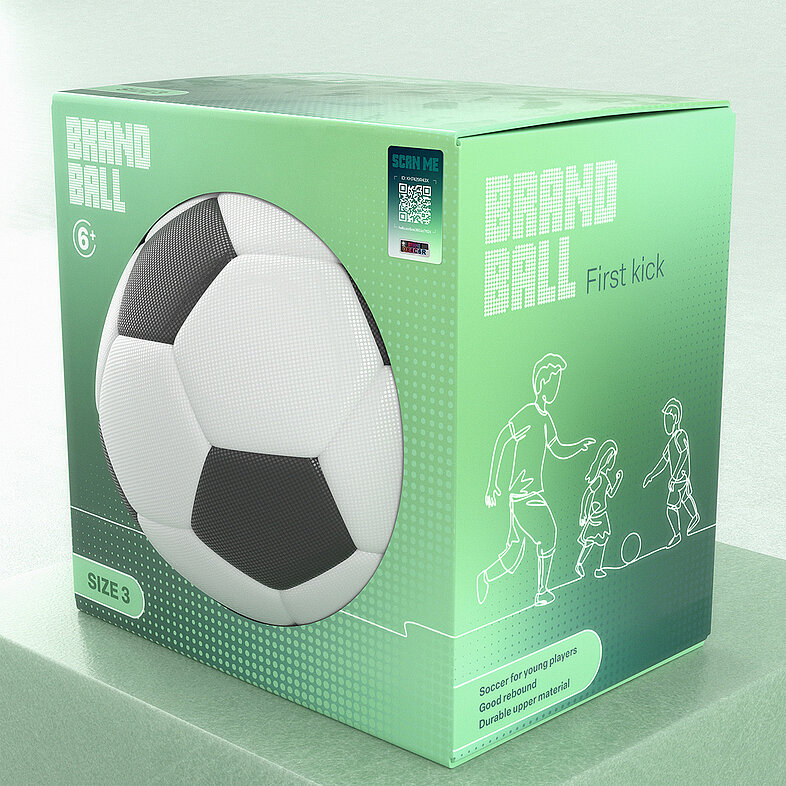
Printed security
SCRIBOS' printed security solutions, such as ValiGate® Direct Print, allow manufacturers to embed security features directly into their toy or packaging. This reduces material waste and eliminates the need for additional labels or inks. Therefore, this eco-friendly solution not only enhances recyclability but also simplifies application and reduces the carbon footprint. Consumers can scan this feature to authenticate the product, providing peace of mind that the toy is both safe and genuine.

Security seals
Security seals provide clear and visible evidence of tampering or unauthorised access to products. For industries like toys, where safety and authenticity are essential, SCRIBOS seals offer critical protection.
SCRIBOS offers advanced tamper-evident sealing solutions, designed to deliver maximum protection against tampering, theft, and counterfeiting. These seals are equipped with a distinct void effect that appears once tampered with, providing clear, irreversible evidence of first opening. The seals can be fully customised to align with a brand’s packaging and identity, ensuring both security and seamless branding.
SCRIBOS also provides sustainable options like the HighPerSeal© Green label, made entirely from paper, which offers the same tamper-evident security while aligning with environmental goals. This solution supports the growing focus on sustainability within the toy industry without compromising product safety or security.
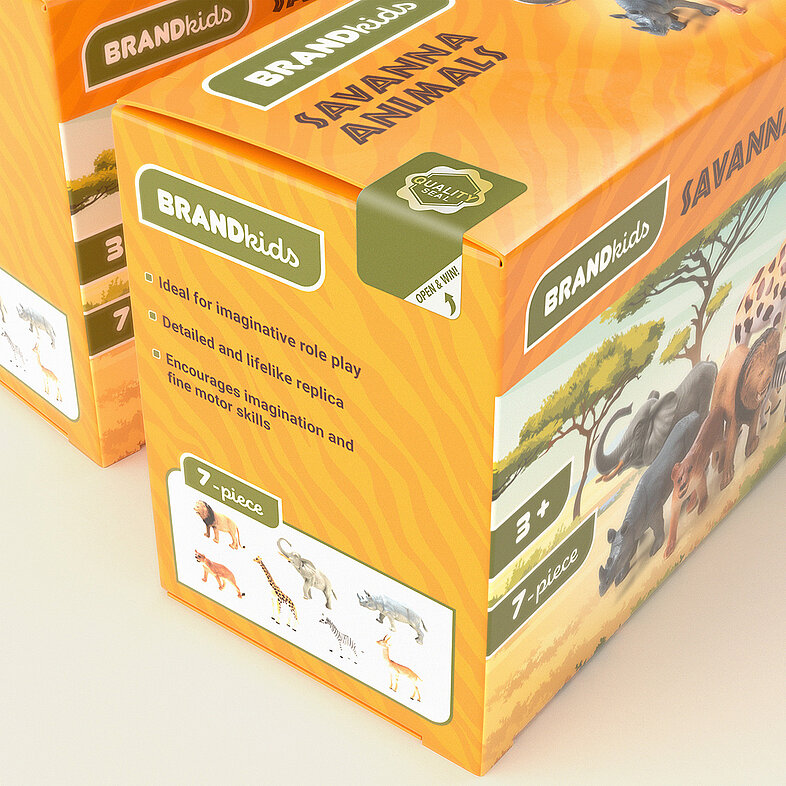
Holographic security
Another advanced security measure is the use of ValiGate® Zoom, the first smartphone-authenticable hologram. A collectible doll, for example, could have a holographic security label embedded in its packaging. Parents can scan the holographic feature with their smartphones to verify the toy’s authenticity, adding another layer of protection. The presence of this hologram not only prevents counterfeit toys from reaching the market but also reinforces consumer trust in the brand.
Track illegal activities with a digital platform
It is crucial for brands to track illegal activities associated with counterfeit toys, and this is where a digital platform plays a pivotal role.
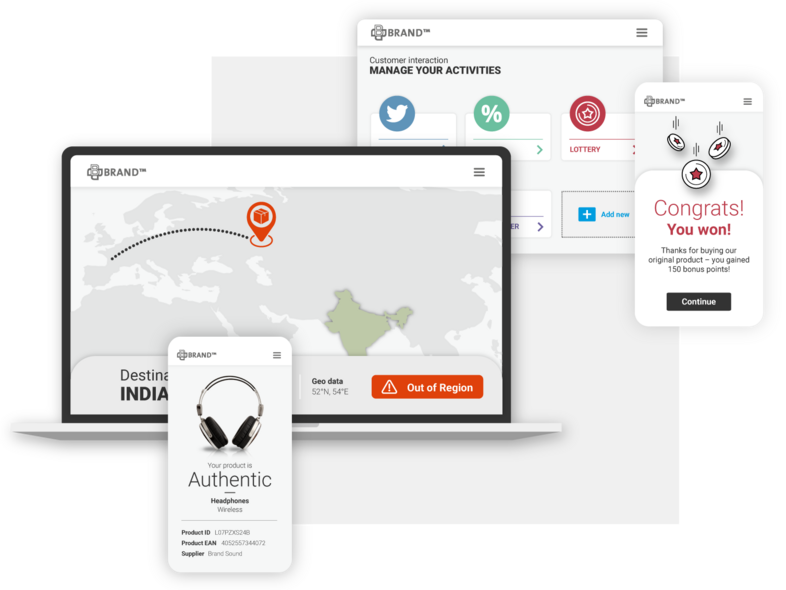
All physical and printed security solutions can be seamlessly integrated into the SCRIBOS 360 digital platform, offering a unified brand protection solution. The platform serves as a comprehensive dashboard for brand owners, seamlessly integrating with all security features to monitor every scan and identify counterfeiting hotspots. This ensures that counterfeit or unsafe toys do not reach the hands of unsuspecting parents, thereby keeping children safe from potentially hazardous knockoff products.
However, not only this, SCRIBOS 360 also detects grey market activities and overproduction. For example, grey market issues can arise when a toy is produced for one region but is sold in another, often at lower prices and without proper safety checks. Additionally, toys produced during unauthorized "third shifts" in factories may be of lower quality and sold without the brand’s knowledge. With SCRIBOS 360, brand owners can track and prevent these kinds of unauthorised sales.
The power of customer Involvement
An essential element of SCRIBOS' solution is involving consumers in the fight against counterfeit toys. By empowering parents to verify the authenticity of toys with a simple scan, SCRIBOS ensures the safety of every purchase. Customers can use their smartphone cameras to scan labels or security markings, triggering a quick, one-step authentication process — no app required.This consumer involvement not only protects their children but also helps brands by transforming customers into a network of vigilant detectives. Each scan provides valuable data that helps brands locate counterfeiting hotspots and grey market activities. Additionally, after the scan, brands can connect with customers through integrated digital marketing tools, offering personalised discounts, linking to product websites or gathering feedback.
This approach can be described as double consumer involvement: (1) Customers participate by verifying products, ensuring authenticity for themselves while providing the brand with valuable scan data, and (2) brands gain / can offer additional consumer engagement opportunities through promotional features (which we provide by promotional buttons after scan). It can basically be called a “2-in-1 consumer involvement system”.
By incorporating customers into the brand protection process, SCRIBOS enables brands to fully leverage their anti-counterfeiting measures, while giving parents a reliable way to ensure the toys they purchase are genuine and safe. This customer-first approach strengthens both brand trust and consumer safety in the toy market.
Conclusion
Counterfeiting in the toy industry is a complex and growing challenge that necessitates coordinated efforts from manufacturers, governments, and consumers. While counterfeit toys present significant safety hazards and economic losses, brands have a range of tools available to combat this issue. Through the use of security labels, advanced printed authentication features, and digital platforms like SCRIBOS 360, toy manufacturers can protect their products, preserve brand integrity and ensure consumer safety. As the global toy market continues to grow, the implementation of these anti-counterfeiting measures will be vital in maintaining consumer trust and safeguarding the industry’s future. Additionally, our extensive experience, combined with our knowledge inside the KURZ Group, assures our clients that we are a reliable, long-term partner. We are also committed to sharing our expertise, providing tailored solutions, and continuously adapting our services to meet the unique challenges of each customer in the toys industry.



